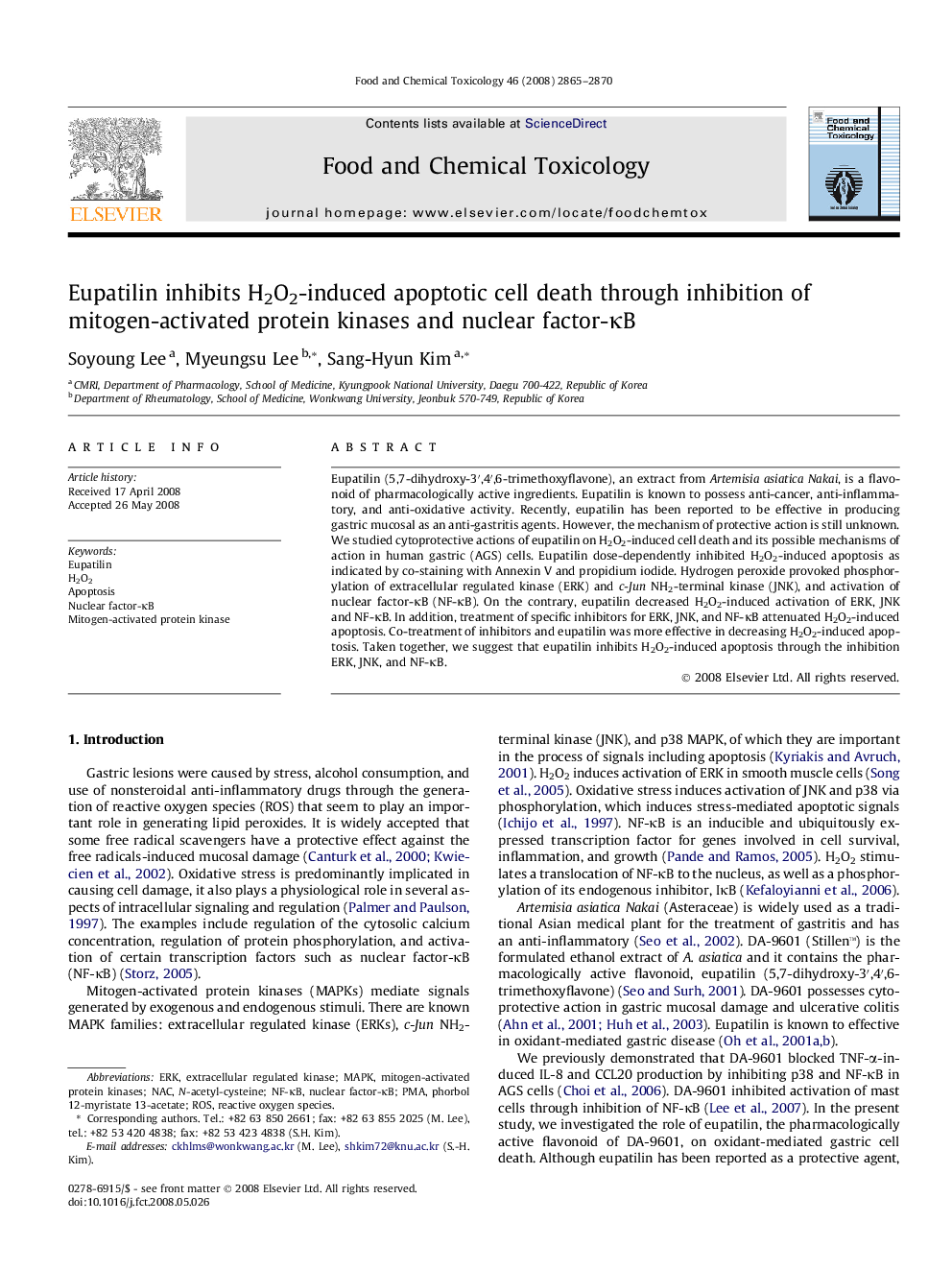| Article ID | Journal | Published Year | Pages | File Type |
|---|---|---|---|---|
| 2587180 | Food and Chemical Toxicology | 2008 | 6 Pages |
Eupatilin (5,7-dihydroxy-3′,4′,6-trimethoxyflavone), an extract from Artemisia asiatica Nakai, is a flavonoid of pharmacologically active ingredients. Eupatilin is known to possess anti-cancer, anti-inflammatory, and anti-oxidative activity. Recently, eupatilin has been reported to be effective in producing gastric mucosal as an anti-gastritis agents. However, the mechanism of protective action is still unknown. We studied cytoprotective actions of eupatilin on H2O2-induced cell death and its possible mechanisms of action in human gastric (AGS) cells. Eupatilin dose-dependently inhibited H2O2-induced apoptosis as indicated by co-staining with Annexin V and propidium iodide. Hydrogen peroxide provoked phosphorylation of extracellular regulated kinase (ERK) and c-Jun NH2-terminal kinase (JNK), and activation of nuclear factor-κB (NF-κB). On the contrary, eupatilin decreased H2O2-induced activation of ERK, JNK and NF-κB. In addition, treatment of specific inhibitors for ERK, JNK, and NF-κB attenuated H2O2-induced apoptosis. Co-treatment of inhibitors and eupatilin was more effective in decreasing H2O2-induced apoptosis. Taken together, we suggest that eupatilin inhibits H2O2-induced apoptosis through the inhibition ERK, JNK, and NF-κB.
